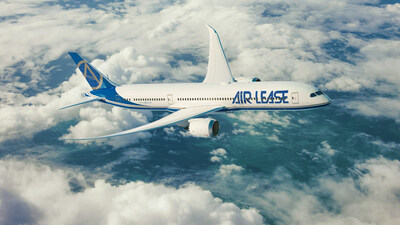Air Lease Corporation (ALC) posted a decline in fourth quarter revenue, primarily due to a decline in end-of-lease revenue, with net income for the three months ending December 31, 2024, dropping to $93 million, down from $211 million in the same period of 2023. Full year net income fell by $220 million, totalling $553 million, while diluted EPS declined 35.2% to $3.33, down from $5.14 in 2023.
Quarterly revenue fell 3.7% to $712.9 million. Rental revenues for the quarter declined by 1%, to $639 million, compared to the same period of the year prior despite fleet growth. Revenues decreased, primarily due to lower end of lease revenue of approximately $54 million when compared to the year prior, due to fewer aircraft returns.
“Our results benefited from the continued expansion of our fleet, offset by lower end-of-lease revenue as compared to the prior year,” said chief executive officer and president, John Plueger.
The company said it expects lease rates and aircraft valuations to rise on the back of the continued supply chain shortage.
Plueger and ALC executive chairman Steven Udvar-Házy said in a joint statement: “Looking forward, we expect lease rates and aircraft valuations to rise, supporting the value of our business. We remain optimistic about the ongoing benefits of these trends, given aircraft shortages are anticipated to persist for several years to come.”
During the fourth quarter, ALC took delivery of 18 aircraft from its orderbook, representing approximately $1.3bn in aircraft investments, ending the period with 489 aircraft in its owned fleet and over $32bn in total assets. The lessor sold 14 aircraft during the fourth quarter, generating $544 million in sales proceeds.
The company delivered 65 aircraft in the full year. Deliveries for 2025 and 2026 is expected to be 46 and 54, respectively. However, this was revised down from the previous quarter, which had forecast 56 for 2025 and 60 deliveries for the following year. For 2025, ALC expects to receive $3 to $3.5bn worth of new aircraft from its order book. The company anticipates facing challenges from the current high-interest rate environment, with adjusted margins in 2025 expected to remain generally in line with 2024 levels.
On a full year basis, the company generated record annual revenues, helped by $5bn in aircraft purchases from its orderbook, and $1.7bn in aircraft sales. The $5bn recorded in deliveries hit the midpoint of the $4.5bn to $5.5bn range that the California-based lessor outlined at the beginning of 2024.
He noted that approximately 80% of ALC’s deliveries expected for 2025 are Boeing aircraft and that any additional challenges emerging in Boeing's production efforts could be impactful.
Plueger stated that the company expects $5bn worth of leases to expire over the next two years. Speaking to analysts on an earnings call, Plueger emphasised that demand for widebody jets has surged in the past six months, outpacing demand for narrowbody aircraft and reversing a post-pandemic trend. Udvar-Hazy attributed the growing demand for larger aircraft to several factors, including rising international travel, an aging fleet, and ongoing production constraints at Boeing and Airbus, particularly with ALCs 787 and A350 models.

